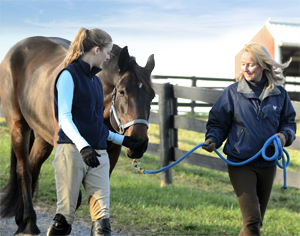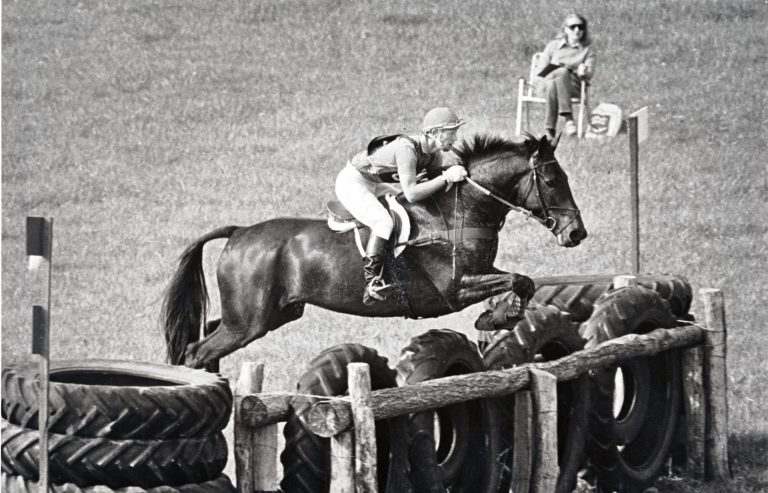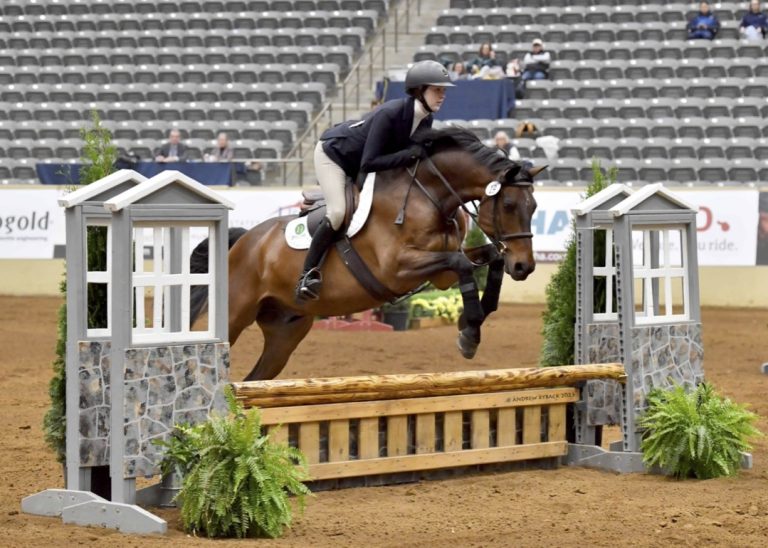For the cost-conscious among us, leasing a horse is a practical way to make the most of available resources. The arrangement, essentially a formal rental agreement between an owner and a rider for a horse’s use, has shown signs of gaining ground in these economically challenging times. At its most basic, leasing a horse is a way for an owner to reduce the cost of her horse’s care without selling him or taking him out of work. For a rider, it’s a means to equestrian involvement?be it a relaxing outing a few times a week or the opportunity to compete an accomplished athlete for a season??often without the full financial obligation.

In the best cases, the benefits of leasing a horse extend well beyond saving dollars and cents. For Chelise Storace, owner of Cressbrook Stables, based out of Kensington Equestrian Center in Kensington, New Hampshire, offering horses for lease turned out to be an effective way to showcase her abilities as a trainer and instructor. “It’s built my reputation for having nice horses,” she says.
From an owner’s perspective, leasing a horse offers assurance that a serviceable horse will continue to have a productive life in the care of another rider. That knowledge provided welcome peace of mind for Chris Phaneuf, owner of Indian Meadow Farm, in West Newbury, Massachusetts. A hunter/jumper rider, she knew she had reached the point where a more advanced show horse would help her improve her skills. But she wasn’t ready to retire or part ways with her Thoroughbred hunter, Shady. Chris had always considered him a companion, not a commodity. So she thought long and hard about what to do with him when she was presented with the opportunity to lease a more experienced horse herself.
“Shady means a lot to me,” Chris says. “I’m ?going to own him for the rest of his life.” Choosing to lease him, she explains, not only helps to defray the expense of the more advanced hunter but also “assures me that he’s being well-cared for all the time. The real benefit is that I’m not selling an older horse into an uncertain market and an uncertain future.”
Affordable Access
Cost savings may be the primary impetus for a rider to decide to lease a horse, but there are a number of other motivations as well. For example, leasing allows a rider to
- pursue equestrian interests without making a full-time commitment. “Adults often lease ?because they are so busy,” says hunter/jumper trainer Olana Laffey, owner of Evenstride Ltd., in Byfield, Massachusetts. “It’s a very pleasant situation for them because they’re glad to be able to fit riding into their lives. Leasing makes it easier.”
- choose a horse who’s tried and true. Perhaps you’re returning to riding like Lynn Macfarlane, whose teenage daughter, Izzy Werman, trains with Chelise. After a long hiatus, Lynn wanted a horse who was proven and safe. She chose one who was well known around the barn: Shady, whose owner, Chris, also rides with Chelise.
- improve skill. “Riding the same horse regularly can impact a rider’s skills more quickly than riding a variety of school horses,” observes Gail Harrington, a dressage trainer and owner of Black Magic Farm, in South Hampton and Derry, New Hampshire. With a leased mount, “a rider can easily move up to another horse without having to sell the one she’s been riding.” That’s a common consideration for a parent like Lynn, whose child is likely to outgrow a precious pony within a year. Leasing one named Peanut from Chelise gave Izzy the opportunity to take lessons, ride four days a week and gain hands-on caretaking experience. As a result, when Peanut no longer was suitable for his ?maturing rider, Izzy was ready and raring
- to move up to a horse.
- compete the right horse at the right time. “Junior riders and college students don’t have the time or money to keep up a horse of their own,” says Olana. “But leasing gives them the chance to ride and show competitively during the time they do have.” That’s why Olana often leases horses to Juniors and college students for the summer. According to Chelise, leasing a horse for competition also works well for a Junior rider in her final year. “It’s better to lease a top horse than to buy a mediocre one if a Junior really wants to compete at the top levels,” she advises. With a short-term lease, the rider can show to her heart’s content until it’s time to head off to school, and her parents won’t be left with an expensive horse to sell.
- ease into ownership. “For students, especially, leasing is a good way to test the waters to see what the responsibilities of caring for a horse are,” says Olana. Perhaps most importantly, adds Gail: “Leasing provides a rider with education and the sense of ?being in the loop’ as part of a supportive equestrian community.” And that’s an essential element in building the bridge to ownership.
To Make a Match
Whether you’re an owner with an available horse or a rider looking to lease, the logical first step to finding a suitable partner is to get the word out. Simply talking with friends at your barn or posting a note on the bulletin board may be all that’s necessary. A classified ad?in print or online?will help you reach a broader audience.
At the outset of your search, take stock of what you have to offer as well as your goals. For instance, in matching a rider with an appropriate horse to lease, Gail looks at four basic criteria:
1. activity?what they’ll be doing.
2. ability?the skill level each one has achieved and how they’re likely to progress together.
3. size?their stature relative to one another. Neither should be too big or too small; the goal is for “just right.”
4. temperament?opposites may ?attract, as the saying goes, but that may not be the best combination for a satisfying horse-rider relationship.
Gail also considers a horse’s reliability. “Everything has to do with the safety of the rider and the horse,” she says, and the more she understands about each individual, the more likely the leasing situation that she arranges will be successful.
That’s the reason why Olana recommends a rider lease a horse she already knows. Ideally, he resides at the barn where she rides and trains. Choosing a known entity increases the likelihood of a satisfactory match, Olana says. Plus, both the rider’s trainer and horse’s owner can monitor the partnership and keep a close eye on progress. “You’re watching your horse or pony, and you have knowledge of what is happening,” Olana explains. “It’s easier to take stock and offer insights and meaningful guidance when you do that.”
Leasing Options
Once a match has been made, the horse’s owner (technically, the “lessor”) and the rider who’ll be leasing him (the “lessee”) must agree on the terms of the arrangement. There are two basic types of leases:
With a full lease, a rider generally ?assumes responsibility for a horse for a fee. In most cases, she also pays some to all of his board?either at the barn where his owner normally keeps him or elsewhere?as well as the cost of routine farriery and veterinary care. In return, she enjoys essentially unrestricted use. A full lease usually does not specify when or how much a horse may be ridden nor does it limit ?access for competitions and shows.
In the case of a partial lease, a lessee agrees to cover a portion of a horse’s expenses?usually half of his board at the barn where he resides?in exchange for a certain, usually proportional, amount of riding time. The horse’s owner pays the balance of the bills and continues to have a role in his care and use. Sometimes referred to as a half lease or share lease, this arrangement generally requires ongoing contact between owner and rider to avoid conflicts, especially with regard to scheduling riding and training times and participating in competitions and clinics.
Nuts and Bolts
A lease agreement may be verbal, but most owners and riders prefer to put the details in writing to minimize the possibility of miscommunication and misunderstanding later on. Some simply draw up a document that works for their particular circumstances. Others adapt one of several lease forms available in various reference books and on the Web. A number of owners turn to lawyers for their documents.
“My current lease agreement was generated by a lawyer,” says Chelise. “Originally, I used one that I put together, but it seemed something was always coming up that it didn’t cover. Even the one the lawyer drew up hasn’t been foolproof. I’ve added extra lines, as needed, myself. For instance, my lease now requires that if someone leases a horse for a year, they are responsible to get the spring shots done. A lawyer doesn’t know this, and after having horses sent back in July who didn’t have any shots, I added it.”
Although the extent of the details covered in a lease agreement will vary according to the circumstances of a situation, the matters usually addressed include
- the names, addresses and telephone numbers of the horse owner (the lessor) and rider (the lessee);
- a description of the horse (name, age, breed, gender, height, color, distinguishing markings, registration number, etc.);
- the term?the start and end dates?of the agreement (which may be month-to-month or for a year, a season or a series of shows);
- conditions for early termination;
- fees (deposit, rent, late charge) and due dates;
- stipulations of use (number of days per week, purpose/activity, under the guidance of a specific trainer/instructor, etc.);
- limitations of use;
- instructions for care (stabling, turnout, feed, water, supplements, routine veterinary and farriery care, emergency assistance) and who bears the cost;
- insurance requirements;
- stipulations prohibiting the horse from being subleased or moved to another location except for travel to a show;
- special rights (such as for the lessor to sign a release for the horse at a show); and
- options for lease renewal and the right to purchase the horse.
In most cases, lease fees are negotiable. Generally, the cost of a full lease for a year will range from 25 to 30 percent of the horse’s value?in other words, about $2,500 for a horse worth $10,000. Although that still may seem a sizeable investment for a budget-minded rider, it’s a practical way to have access to a worthwhile horse. And that just seems to make good sense, whatever the state of the economy.
Download FREE full and partial lease legal forms.
Reprinted from the February 2012 issue of Practical Horseman Magazine.
Is buying a horse right for you? Go to Equine.com, the premier classifieds site of the Equine Network, to search for the perfect horse!










